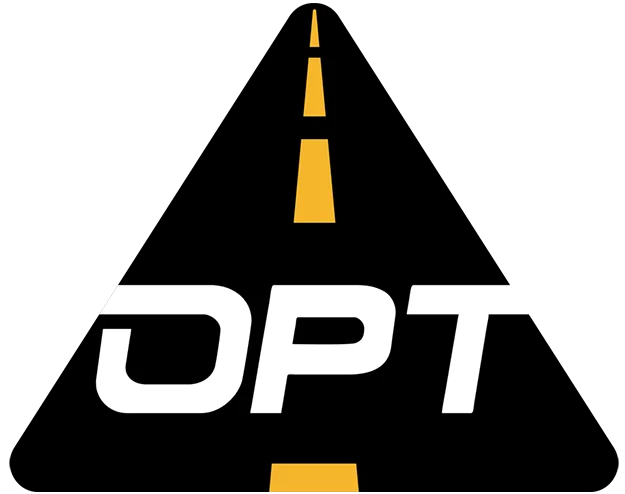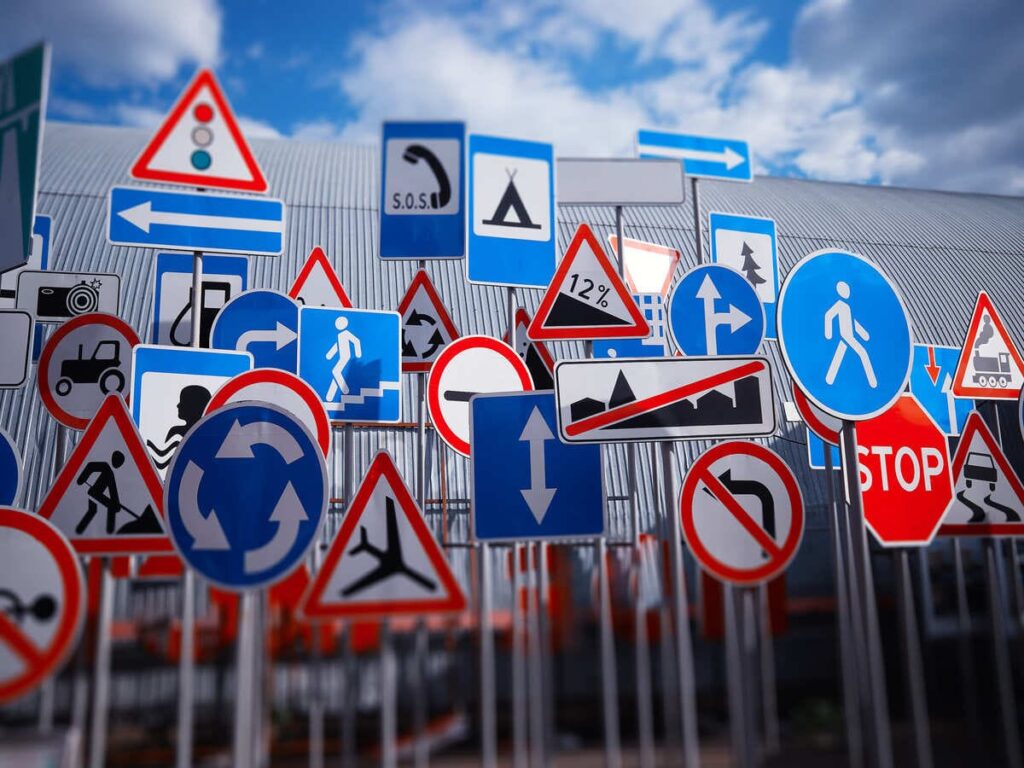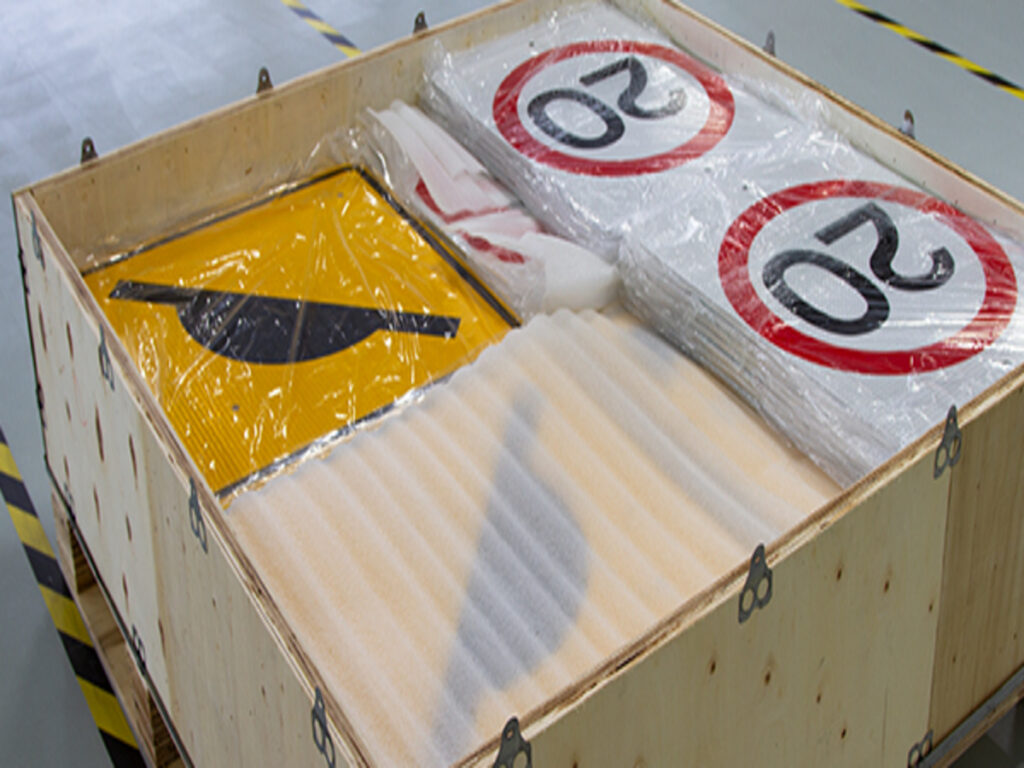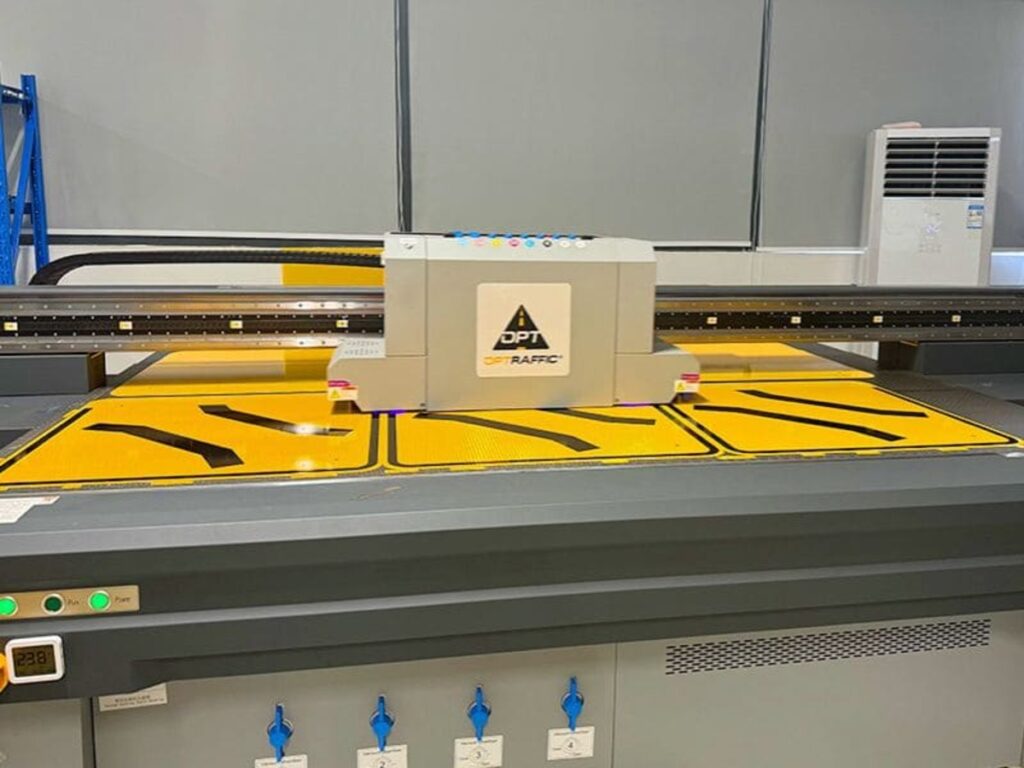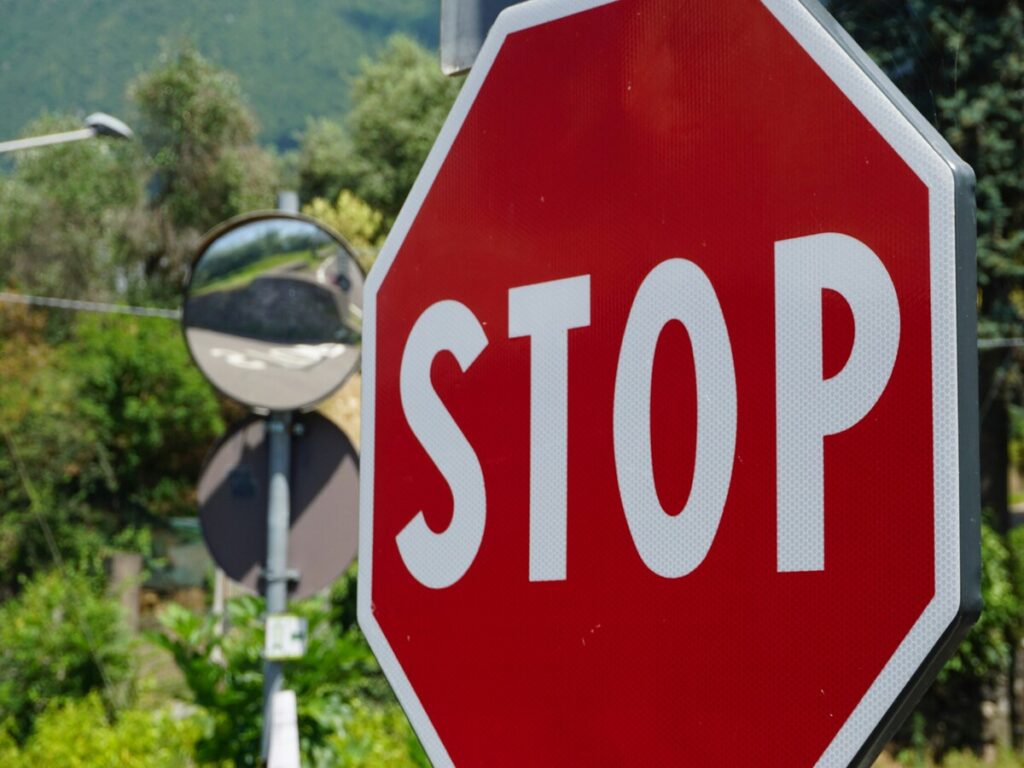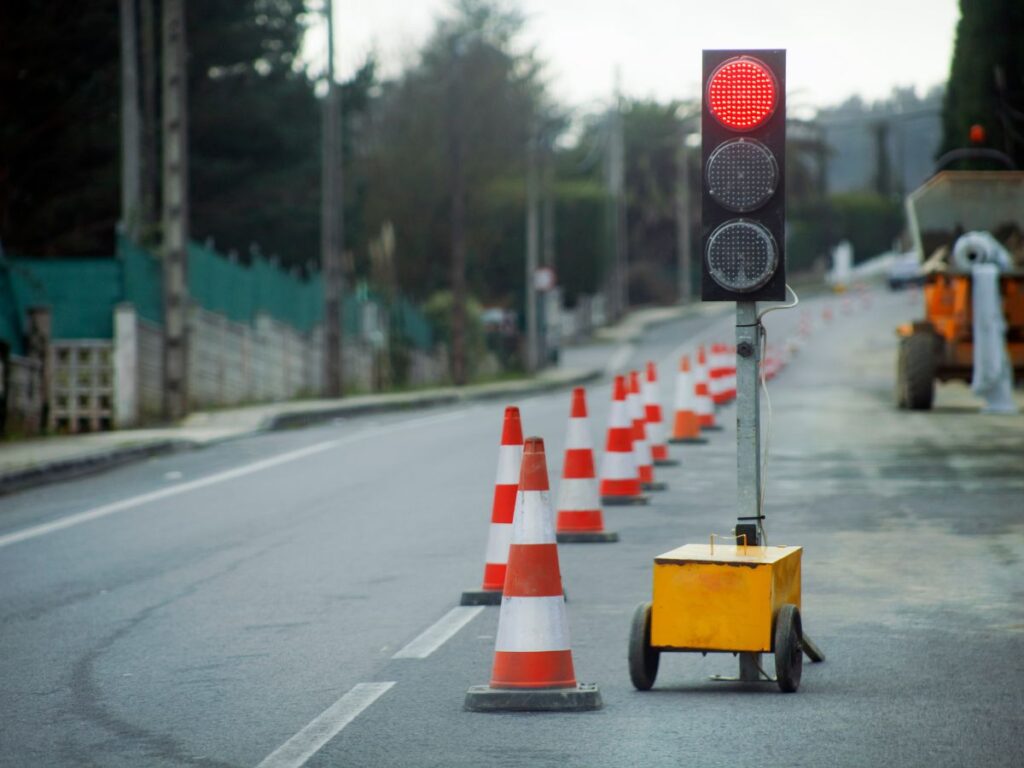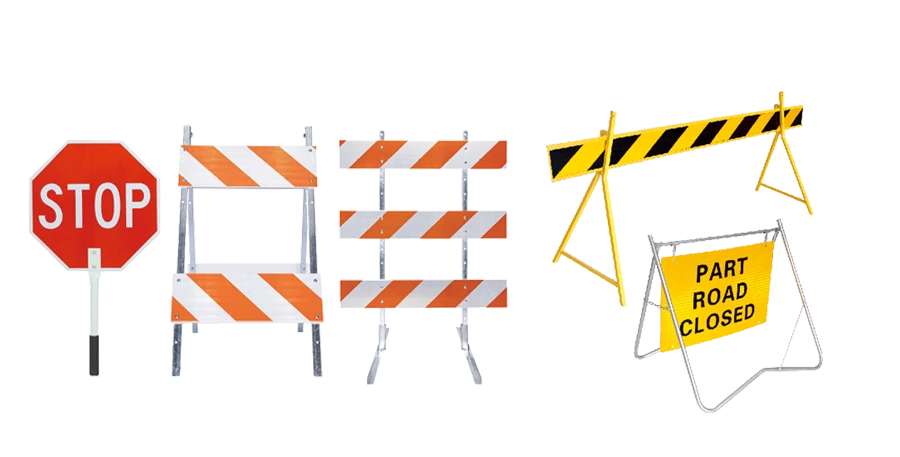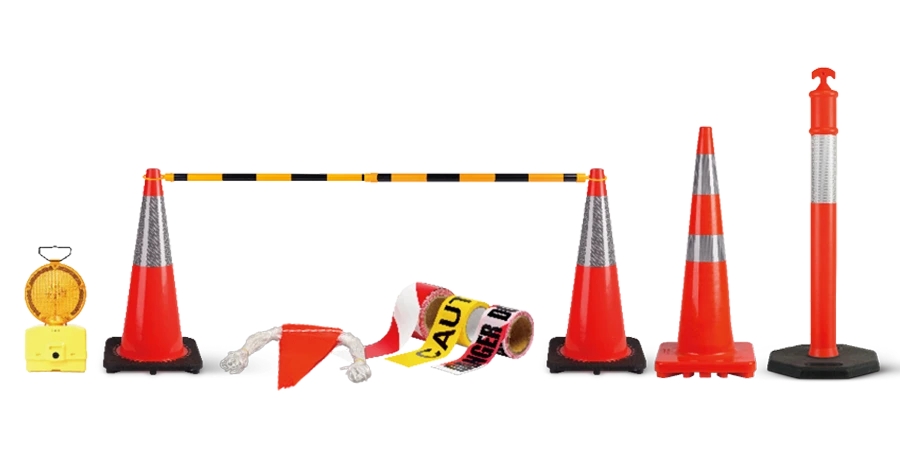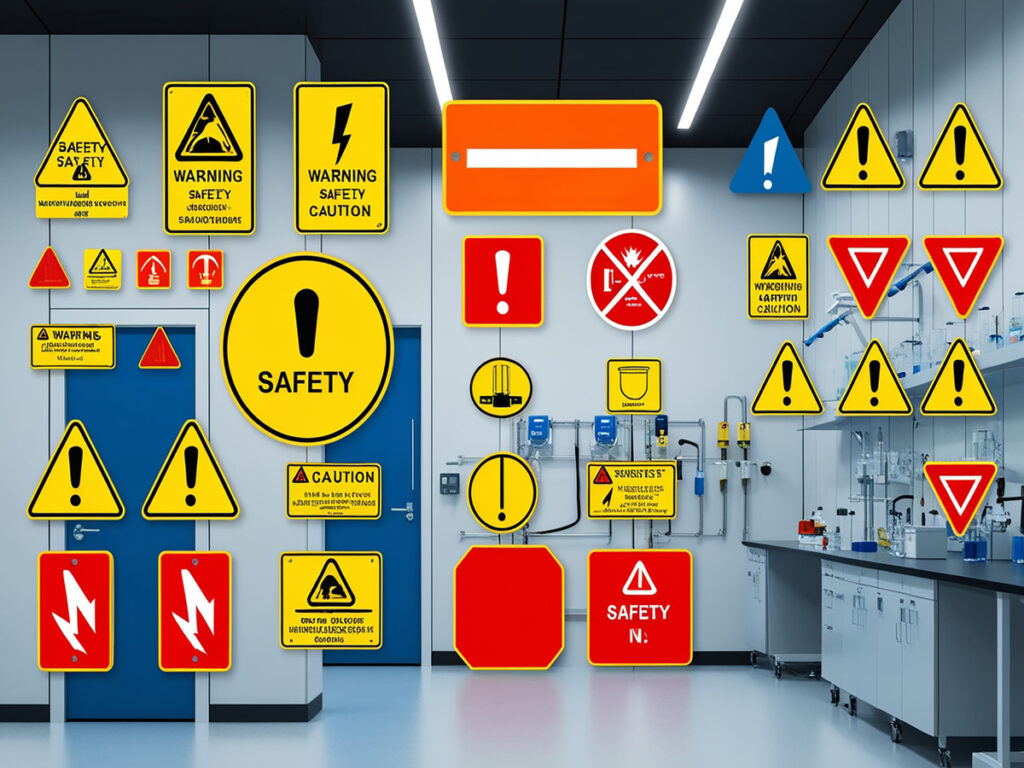
Safety signs are crucial for guiding actions and maintaining workplace safety. Utilizing safety sign colors and graphics together enhances the visibility and effectiveness of these signs. 예를 들어, studies indicate that firefighting signs achieve a comprehension rate of 74.70%. This demonstrates that effective safety sign colors and images help individuals quickly recognize safety signs. 추가적으로, research reveals that yellow backgrounds improve the visibility of hazards. This underscores the impact of color choices on how people respond to signs. By understanding these concepts, you can create signs that effectively communicate safety messages.
Optraffic은 광범위한 범위를 제공합니다 high-quality safety signs designed for maximum visibility and effectiveness. OPTRAFFIC safety signs for sale use optimal colors and graphics to ensure quick comprehension and compliance.
Contact us today to explore our safety signage solutions tailored to your specific needs.
주요 테이크 아웃
- Red means danger and needs fast action. Use it on warning signs to catch attention.
- Yellow shows caution and keeps people careful but calm. Use it on signs about possible dangers.
- Green stands for safety and peace. Use it on signs showing safe places or exits.
- Blue means rules and following them. Use it on signs with safety instructions to ensure people obey.
- Mix clear pictures with the right colors to make safety signs easier to understand and more useful.
How Colors Affect Behavior in Safety Signs
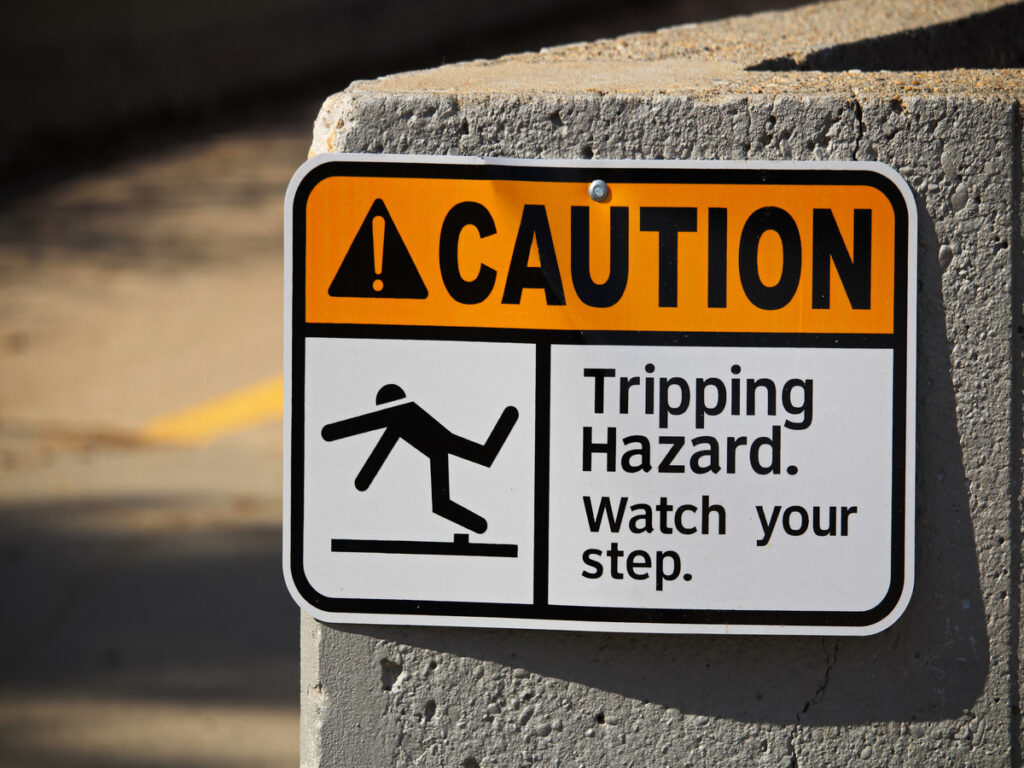
Red and Urgency
Show how red means danger and pushes for quick action.
Red is a color that grabs attention fast. It shows danger and urgency, making it great for safety signs. When you see red, your brain links it to warnings or risks. This happens because red makes people feel alert or even scared. These feelings push you to act quickly and stay safe.
- Red catches your eye and gives clear warnings.
- It makes you feel urgency to act right away.
- The bright color stands out, 희미한 빛에서도.
예를 들어, stop signs and fire alarms use red so people react fast. Red’s strong effect on behavior is why it’s used in places where quick choices matter.
Yellow and Caution
Explain how yellow helps people stay alert and aware.
Yellow is the color of being careful. It warns you without making you panic, which is why it’s used on warning signs. When you see yellow, it makes you notice risks around you. This color helps your brain stay sharp and focused on the sign’s message.
Yellow is often used for hazards like wet floors or construction areas. Its contrast with black letters or symbols makes it easy to read. Yellow grabs attention but keeps you calm, helping you stay careful in risky situations.
Green and Safety
Explain how green shows safety and encourages good actions.
Green is a color that means safety and calmness. It makes people feel secure and ready to act positively. 직장에서, green signs show safe areas, 비상 종료, or first aid spots. This color’s calming effect helps you trust and follow its directions.
Green is linked to health and growth, which makes it feel safe. It stands out well with white or black symbols, making it easy to see. 예를 들어, green exit signs lead you to safety during emergencies. Green checkmarks show approved actions or safe conditions. Using green in signs builds trust and helps people follow safety rules.
팁: Using bright colors like red, 노란색, and green with clear pictures makes safety signs easier to understand and respond to quickly.
Blue and Compliance
Learn how blue shows rules you must follow for safety
Blue is important in safety signs because it shows required actions. A blue sign tells you to follow certain rules to stay safe. This color feels calm and trustworthy, making it easier to obey the instructions. It guides people without making them feel scared or stressed.
You’ll see blue signs in places where safety rules matter a lot. These signs remind you to do things that keep everyone safe. 예를 들어, a blue sign might tell you to wear goggles, 헬멧, or other safety gear. By linking blue with rules, these signs help you understand why following them is important.
알고 계 셨나요?? Blue is the worldwide color for mandatory safety signs. This helps workers everywhere recognize and follow these signs easily.
Here are some ways blue is used in safety signs:
- Showing that you need to wear safety gear like helmets.
- Giving steps for using machines safely.
- Marking areas where safety rules must be followed.
Blue signs often have white pictures or words to make them clear. This mix makes the message easy to see, 멀리서도. 예를 들어, a blue circle with a white helmet picture means you must wear a hard hat.
Using blue well helps make signs that people trust and follow. When you see a blue sign, remember it’s there to keep you safe by showing what to do.
The Role of Graphics in Safety Sign Design
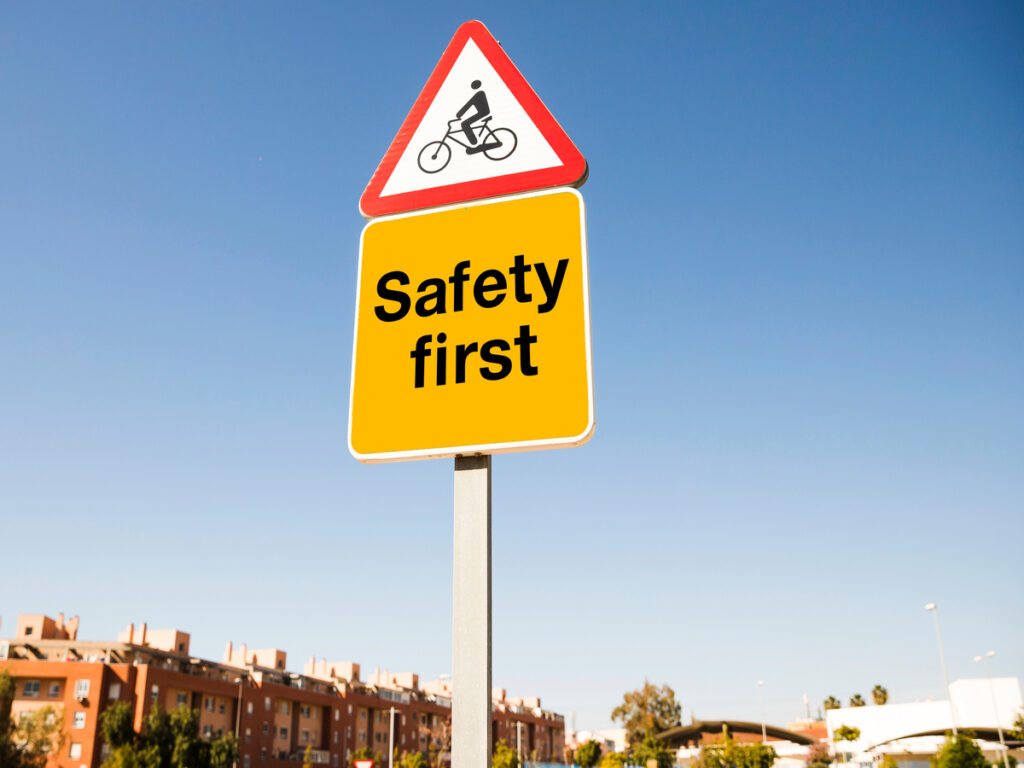
Universal Symbols and Recognition
Show how common symbols make safety signs more effective.
Symbols are key to making safety signs work well. Common symbols help you understand a sign’s meaning quickly, even if you don’t know the language. These symbols use simple designs to catch your eye and guide your actions.
예를 들어:
- The ‘No Smoking’ 징후, with a red circle and slash, stops unsafe smoking in risky areas.
- The ‘High Voltage’ 징후, a yellow triangle with a black edge, warns about electric dangers.
- Emergency symbols, like the ‘Fire Exit’ 징후, show the fastest way to escape during emergencies.
These symbols are easy to notice and understand. Bright colors and strong contrasts make them visible, 힘든 상황에서도. By mixing clear symbols with good color choices, safety signs share important messages fast and clearly.
팁: Choose signs with bold symbols and bright colors for quick understanding.
Combining Graphics with Safety Sign Colors
Explain how matching symbols with colors improves safety guidance.
Matching symbols with the right colors makes safety signs stronger. Colors like red, 노란색, 녹색, and blue each send a specific message. When paired with symbols, they create clear instructions. 예를 들어, a red circle with a slash over a cigarette shows no smoking. Red adds urgency, while the symbol shows what to avoid.
Yellow works with warning symbols, like a triangle with an exclamation mark, to show danger. The bright yellow grabs your attention and tells you to be careful. Green with arrows points you to safe places or exits. Green’s calming effect helps during stressful times.
Using the right color and symbol mix makes signs easy to see and understand. The contrast between colors and symbols ensures the message is clear, 멀리서도. This smart design helps you act fast and stay safe.
알고 계 셨나요?? Bright colors and clear symbols make safety signs 74% 더 효과적입니다.
Synergy Between Colors and Symbols
고위험 지역
Show how red and hazard symbols warn about danger.
Red is very important in dangerous places. It grabs attention fast and warns about risks. When mixed with hazard symbols, it sends a strong warning. 예를 들어, a red triangle with a black lightning bolt shows electrical shock danger. This mix helps you notice the risk and stay safe.
Studies show red works well in safety signs. Chapanis (1994) found red, 노란색, and orange make hazards seem more serious. Braun et al. (1995) showed colored labels, like red ones, are easier to read and seem more dangerous than black-and-white ones. Luximon et al. (2003) found red backgrounds with black borders and white text got the highest danger ratings. These studies prove red makes warnings clearer and more urgent.
| 공부하다 | 결과 |
|---|---|
| Chapanis (1994) | 빨간색, 노란색, and orange make hazards seem more serious. |
| Braun et al. (1995) | Colored labels are easier to read and seem more dangerous. |
| Luximon et al. (2003) | Red with black border and white text got the highest danger ratings. |
Using red with hazard symbols makes safety signs better at stopping accidents in risky areas.
Emergency Routes
Explain how green and symbols help people find safety.
Green is key for showing safe paths during emergencies. It helps keep people calm so they can follow directions. When paired with symbols like arrows or running figures, green signs show where to go. 예를 들어, a green sign with a white arrow pointing to a door shows the nearest exit.
Green makes people feel safe and ready to act. It tells you that following the sign will lead to safety. During emergencies like fires, green signs with clear symbols help avoid confusion and guide people out safely.
Bright green stands out with white symbols, 희미한 빛에서도. This makes the message easy to see and understand. 함께, green and symbols help you act quickly and confidently in emergencies.
팁: Place emergency signs at eye level and near exits for best results.
Psychology of Color in Safety Signs
Emotional and Cognitive Responses
Learn how colors affect feelings and guide decisions.
Colors have a strong effect on how we feel and act. 예를 들어, red makes you feel urgency and grabs attention fast. This is why it’s perfect for warning signs that need quick action. Blue feels calm and trustworthy, so it’s used for rules you must follow. Green makes you feel safe and ready to act during emergencies.
People have studied color psychology for hundreds of years. Johann Wolfgang von Goethe grouped colors by how they make us feel. His research helped us understand how colors change behavior. 예를 들어, red feels dangerous, while blue and white feel safe and reliable. These feelings are important for safety signs, where the right colors make messages clearer.
Studies show color choices also affect decisions in many fields. In medicine, blue and white make people trust products and feel safe using them. Red’s urgency makes people act fast when they see it on warning signs. By knowing how colors affect emotions, you can design signs that share safety messages well.
Visual Perception in Safety Design
See how your brain reads colors and symbols quickly.
Your brain understands colors and symbols faster than words. That’s why safety signs use bright colors and simple pictures to get your attention. Research shows clear signs help you focus and react faster. But confusing signs slow you down, which can be risky in emergencies.
그만큼 brain’s visual system helps you understand colors and symbols. 예를 들어, red and yellow stand out and warn you about danger. Green and white show safe exits, while blue and white explain rules to follow. These color mixes make signs easier to see and understand quickly.
Good safety signs use color psychology and how we see things to work well. By picking the right colors and symbols, you can make sure safety messages are noticed and followed fast.
팁: Use bright color pairs like red and yellow or green and white to make safety signs easy to see and understand.
Best Practices for Effective Safety Signs
Clarity and Readability
Tips to make safety signs clear and easy to read.
Safety signs must be clear to share their message well. They should grab attention fast and be easy to understand. 이것을하기 위해, keep the design simple and smart.
- 빨간색과 같은 밝은 색상을 사용하십시오., 노란색, 녹색, 그리고 파란색. These colors catch the eye and help people notice the sign quickly.
- Pick plain, easy-to-read fonts. Avoid fancy styles. Sans-serif fonts are best because they are clear, 멀리서도.
- Keep the message short and simple. Too many words can confuse people and make the sign less effective.
- 사람들이 쉽게 볼 수있는 표지판을 놓으십시오, 눈높이처럼. Make sure the area is well-lit so the sign is visible.
Studies show clear signs help prevent workplace injuries. 예를 들어, 그만큼 보건 및 안전 임원 (HSE) says better signs can stop many accidents. Using digital signs can also make messages clearer and more engaging.
팁: Test your signs with a small group to check if they are easy to understand before using them.
표준 준수
Why following ANSI and ISO rules is important for safety signs.
Following ANSI and ISO rules makes sure your safety signs meet global safety standards. These rules guide you on colors, 기호, and where to place signs. This helps people understand the signs no matter where they are from.
Sticking to these rules saves time and money by avoiding mistakes early. It also shows that safety is important in your workplace. 예를 들어, using the right colors and symbols makes signs clear and meets safety rules.
Using creative ideas that follow these rules can improve safety and quality. By following ANSI and ISO guidelines, you make signs that protect workers and build trust in your safety efforts.
메모: Check ANSI and ISO updates often to keep your signs safe and up-to-date.
Common Mistakes in Safety Sign Design
Confusing Color Choices
Talk about how wrong colors can confuse safety messages.
Using the wrong colors on safety signs can confuse people. Colors are important for grabbing attention and sending the right message. 예를 들어, 빨간색은 위험을 의미합니다, 녹색은 안전을 의미합니다. If these colors are used incorrectly, people might misunderstand the sign. Imagine a red sign with a safety symbol—it sends mixed signals and slows decisions.
Studies show why picking the right colors matters. One study, Children’s Choice: Color Associations in Children’s Safety Sign Design, found red made people feel the most aware of danger and follow rules. Another study, Users’ Hazard Perceptions of Warning Components, showed red was the best for warning people, followed by yellow and black. These studies prove that wrong color choices can confuse people and increase risks.
| 공부 제목 | 결과 | 그것이 의미하는 바 |
|---|---|---|
| Children’s Choice: Color Associations in Children’s Safety Sign Design | Red made people notice danger and follow rules the most. | Wrong colors can confuse people about danger levels, making signs less helpful. |
| Users’ Hazard Perceptions of Warning Components | Red was the best for showing danger, followed by yellow and black. | Using the wrong colors can confuse people about safety risks. |
| An Evaluation of the Factors in Comprehensibility of Industrial Safety Signs | Colors help people understand signs by grabbing attention. | Wrong colors make signs harder to understand, causing safety problems. |
To avoid confusion, use colors that match the message. This makes signs easier to read and understand.
Overloading with Graphics
Explain why too many symbols can confuse the message.
Using too many symbols on a safety sign can confuse people. Safety signs should be simple and clear. When there are too many graphics, it’s hard to focus on what’s important. This makes the sign less effective at guiding people.
Research backs this up. 박사. 녹색 (2024) found that workers ignored warnings when there were too many, leading to risky behavior. Kim et al. (2023) showed that virtual reality training helped reduce “sign fatigue,” 안전 개선. Vance et al. (2023) found that students didn’t understand cluttered signs, proving that simple designs work better.
| 연구 | 결과 |
|---|---|
| 박사. 녹색 (2024) on alarm fatigue | Too many warnings made workers ignore them, causing unsafe actions. |
| Kim et al. (2023) on VR training | Virtual reality training helped people pay attention to safety signs. |
| Vance et al. (2023) on sign understanding | Students didn’t understand cluttered signs, showing simple signs work better. |
To make traffic safety signs clearer, use fewer symbols. Focus on the most important message and use bold, simple graphics. This helps people understand the sign quickly and reduces confusion.
팁: Use one or two symbols with matching colors to keep signs clear and easy to notice.
Using safety sign colors and symbols together makes safety signs work better. Good design helps signs share their messages clearly and easily. By understanding how colors affect people, you can make signs that stand out and get noticed.
- Adding color makes safety messages easier to see and understand.
- Using common color meanings, like red for danger, 혼란을 피하십시오.
- Signs with both safety sign colors and symbols send messages faster and clearer.
By following these ideas, you can create signs that save lives and make places safer. If you want to learn more about the meanings and principles behind safety sign colors, 블로그를 확인하십시오: “교통 안전 부호 색상 및 설계 원리 이해: 포괄적 인 개요“.
FAQ
What is the most important color for safety signs?
Red is the top safety sign color. It shows danger and urgency, making people act fast. You see it on stop signs, fire alarms, 그리고 경고. Its bright look and strong effect make it key for saving lives.
Why are symbols used on safety signs?
Symbols help everyone understand the message quickly. They work even if people speak different languages. 예를 들어, a running person on a green sign shows an emergency exit. Symbols make hard ideas simple and easy for all to follow.
How do colors and symbols work together on safety signs?
Colors and symbols make a strong team. Colors catch your eye, and symbols explain the meaning. 예를 들어, a yellow triangle with a lightning bolt warns about electric danger. This mix helps people notice and act fast.
Can safety signs be effective without following standards?
아니요, rules like ANSI and ISO make sure signs are clear everywhere. These rules guide safety sign colors, 기호, and where to place signs. Ignoring them can confuse people and make signs less helpful.
How can you make safety signs more noticeable?
Use bright safety sign colors, 명확한 기호, and short text. Put safety signs at eye level in bright spots. Test them with a group to check if they’re easy to understand. These tips make safety signs stand out and work better.
팁: Keep designs simple and use strong contrasts for better results.
